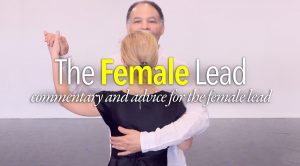The dance is no longer a walking dance, it’s a ‘Turning Dance‘. And as such that means that you need to study the Follower’s Molinete from a Leading perspective as well as from the Follower’s perspective. Why ? Because it will become your go to vocabulary choice.
The fact is that as much as we tout the fact that Tango is a walking dance, when you’re out social dancing, because the ronda doesn’t move, especially on a crowded dance floor (even in Buenos Aires), the dance ends up turning, constantly. Even Gustavo Naivera (father of modern tango) realized this very early on (for other reasons) and turned his study towards the study of the turn (both roles by the way), leading the Follower’s Molinete, as well as the Lead’s Giro in Close Embrace, and Open Embrace.
However, this is not the only Turn that you have available to you. There are in fact Eight Kinds of Turns. The more common of those turns for most leads (at almost any level) is the Rock Step series (usually done in Parallel system) and only to the Open Side of the Embrace. The next most common turn is the Ocho Cortado and the multiple Ocho Cortado Options and variations on a theme. These are just some of the more common turns that are executed on a social dance floor to alleviate the problem of the rotunda not moving.
Reality is that you do need to study these turns on a regular basis, constantly refining your understanding of them, employing their usage so that you become better and better familiar with them so that when the time comes to use them in the line of dance that you don’t hesitate, or stumble with the thought. Because if you have to stop and think about it, it’s too late. The moment has passed and you’ve missed a musical opportunity.
The Tango Topics Opinion: Say wbatever you want about ‘modern’ Tango. There’s no doubt about what it has become due to certain factors.











